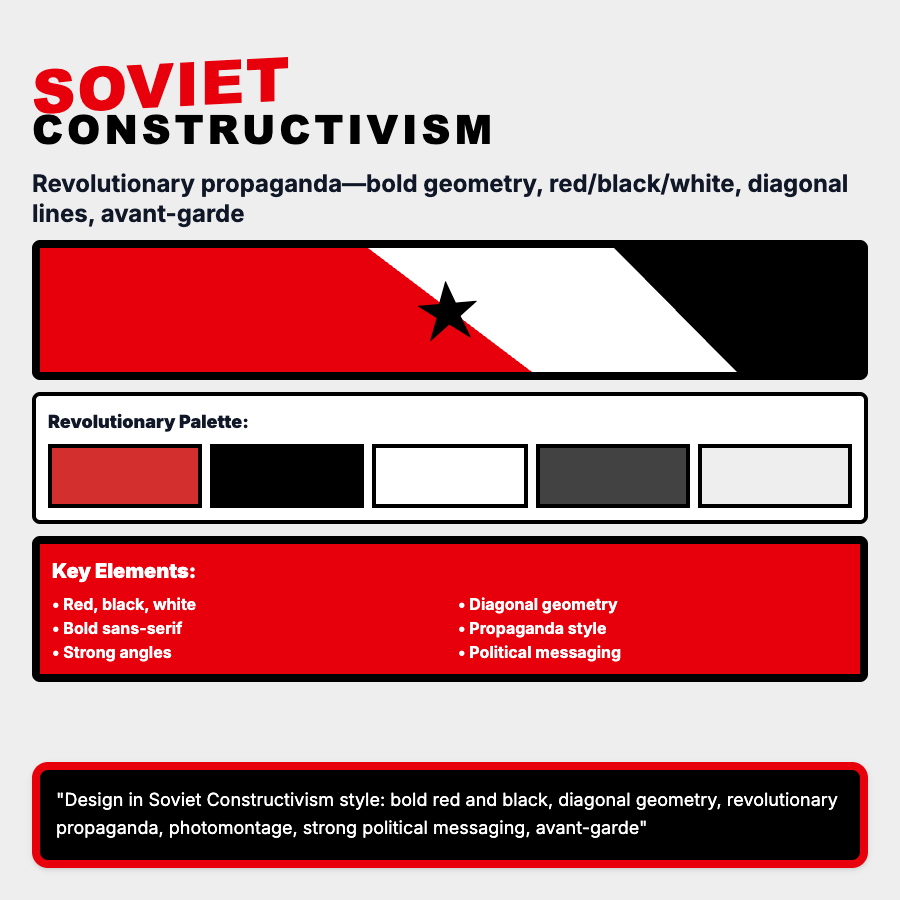
What is Soviet Constructivism Design?
Soviet Constructivism Design draws from 1920s USSR revolutionary art—bold geometric shapes, limited color palette (red, black, white), diagonal compositions, photomontage, and utilitarian typography. Influenced modern graphic design despite propaganda origins.
When Should You Use This?
Use constructivism for historical content, political projects, bold statements, or design paying homage to modernist movements. Works for products wanting revolutionary, bold aesthetic. Be aware of political context.
Common Mistakes to Avoid
- •Missing ideology—constructivism had purpose; purely decorative use misses the point
- •Wrong colors—specifically red, black, white with occasional yellow; other colors break aesthetic
- •Too decorative—constructivism was utilitarian; ornamental elements contradict philosophy
- •Ignoring context—Soviet aesthetics carry political weight; use thoughtfully
- •Poor composition—requires bold diagonal compositions and dynamic geometry
Real-World Examples
- •Political campaigns—some use constructivist aesthetics for revolutionary messaging
- •Design history content—retrospectives on modernist design movements
- •Art exhibitions—museums use appropriate aesthetics for constructivism exhibits
- •Posters—event posters sometimes adopt constructivist bold geometry
Category
Aesthetic Design
Tags
constructivismsoviet-designrevolutionarypropagandabold-geometry